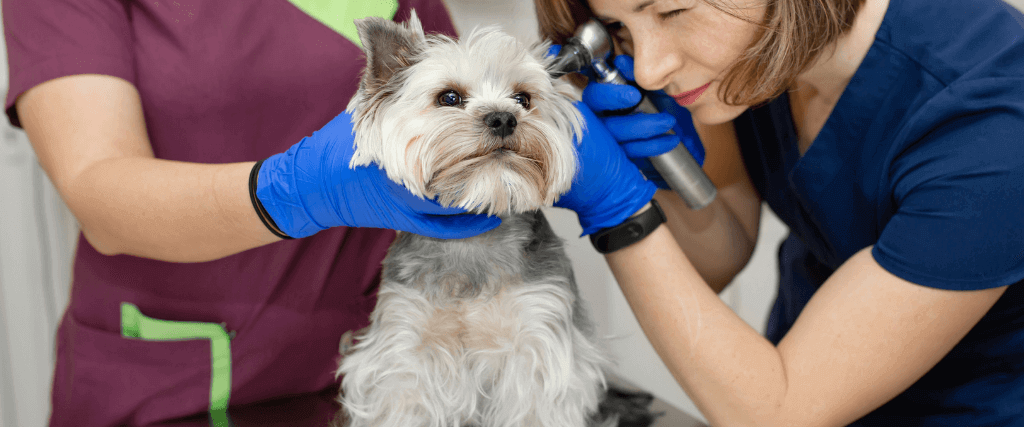September 19-25, 2021, is Deaf Pet Awareness Week when owners of these special pets celebrate the lives of their faithful companions and the unique relationship they have. While deafness is considered a disability, it’s often overlooked since the pet isn’t struggling with mobility. However, deaf pets need to adapt to a different way of life, just as a dog with an amputated limb or a cat with a missing eye. Proper training and a devoted owner means a deaf dog can still live their best life.
Identifying Deafness
Deafness in dogs can be present from birth due to congenital deafness or acquired as they age. If it comes with age, deafness happens gradually over time, much like it does with humans. Their eardrums become less flexible, and sounds stop transmitting effectively. Some dogs lose their hearing as a result of chronic ear infections.
Signs of deafness in dogs include:
- Lack of attention when you call their name
- No longer running to the door when someone comes home
- Sleeping more deeply or getting startled more easily
- Not responding to squeaky toys during playtime
To test your dog if you suspect hearing loss, rattle car keys, squeak their toy, or clap your hands when you and the noisy object aren’t in your dog’s line of sight. Hearing loss is most likely the reason if you get no response, and a trip to the veterinarian might be in order.
Communication & Training
The primary difference between deaf dogs and dogs with full hearing is how you communicate with them. Deaf dogs are entirely dependent on visual cues. Therefore hand signals become vital for effective communication, much like sign language used by humans. In fact, the same signs used in American Sign Language can be adopted for deaf dogs, including hand commands for “sit,” “stay,” “come,” and “lay down.” At night when your dog needs to go outside to eliminate, a flashlight becomes a helpful tool to get their attention to come back into the house.
Much like training a puppy, positive reinforcement is helpful when training an aging dog that has become deaf. Shower them with praise and treats when they respond to your visual cues, and they’ll pick up on them quickly and start repeating the behavior. Over time, your dog will acclimate to their new way of life, becoming keenly aware of their surroundings and even noticing floor vibrations as people approach.
Getting Their Attention
As a dog owner, you become accustomed to spontaneously petting your dog, initiating play, and calling their name to get their attention. With a deaf dog, you need to adjust your actions when you need your dog’s attention. Since they can’t hear you approaching, a sudden touch or a sudden ball coming their way will startle them and make them anxious. When visiting a dog park, a friendly dog approaching from behind might spark a negative reaction from your deaf dog. It’s essential to help them see things visually first to avoid startling them. Let them see you before you pet them, show them a toy before you begin playing with them, and watch for approaching dogs at dog parks and make sure your dog sees them coming before an interaction takes place.
ID Tags & Protection
With deafness comes the need to be more alert when it comes to your dog’s safety since they can’t hear traffic, honking horns, the presence of an aggressive dog, or other dangers in their immediate area. For this reason, it’s imperative to always have your dog on a leash – and also because they won’t be able to hear you call them back if they race after a squirrel or bird. Consider purchasing a personalized pet tag that not only includes your name and phone number in case your dog becomes lost but also identifies your dog as deaf for the individual who finds them. And, of course, microchipping your dog is a must, as this will increase your chances of someone returning your dog to you if they were to get out by accident. Remember, a deaf dog is likely to be even more spooked by an Amazon delivery person or the like, so ensuring your deaf dog is microchipped is imperative.
If you’re looking to adopt a new dog, consider a deaf or partially deaf dog at your local shelter. They’re as worthy as the others of your attention and will show you unwavering faithfulness for bringing them into your world and showing them patience. While it takes a little more care and consideration to communicate and interact with your deaf dog, they lead fun, playful, healthy lives just like their fellow dogs. If you’ve recently adopted a deaf dog and would like more tips, or you need to get them in for their first wellness exam, please feel free to give us a call!

